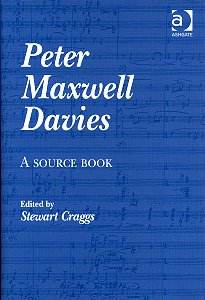This is the fifth in Stewart Craggsí useful collection
of source books, following on from his previous volumes on Lennox
Berkeley, Walton, Elgar and Bliss. The objective in each case
has been to draw together an authoritative reference volume capable
of forming the basis for further research and investigation. Craggs
has the ideal credentials for a project of this kind, being a
former music librarian and the retired Professor of Music Bibliography
at Sunderland University.
In many ways the greatest problem with Maxwell
Davies is where to start given the sheer enormity of his output.
He is without doubt one of the most prolific British composers
at work today. Couple this with the significant number of pieces,
many of them miniatures, that have been written for particular
occasions of personal significance or for performance by close
friends (a good number of which remain unpublished) and the task
that Stewart Craggs has taken on begins to come into perspective.
Incredibly a simple line-by-line listing of Daviesí works alphabetically
runs to eighteen pages.
Craggs divides his material into six categories.
The first comprises the aforementioned listing of works alphabetically,
in which each piece bears its "J" number, so given by
the composer in honour of his manager since 1975, Judy Arnold.
There follows a year-by-year chronology of important events in
the composerís life including those of personal importance and
otherwise. The most substantial part of the book by far however
is taken up by a comprehensive catalogue of works in which information
is collated on details such as the name of the commissioning body
or person, the whereabouts of the first performance, publication
dates, where the manuscript resides and information on any available
recordings. Where possible there is also a bibliography quoting
references to specific works drawn from the national press and
music journals. It is here that Craggs is at his most painstaking
in his research, with extensive information on the more well known
and larger-scale works and as much information as it has been
possible to gather on the others. Understandably there are certain
pieces where it has proved impossible to trace details of first
performance etc but Craggs has also made considerable inroads
into tracing information not previously available. In conclusion
there is a general bibliography dealing mainly with biographical
elements of the composerís life and finally a classified index
of works by category and a general index.
At approaching fifty pounds I would not expect
this book to be entering the collections of anyone but those with
the utmost appetite for and interest in Maxís music. As a reference
book however it is invaluable and along with the composerís own
website, www.maxopus.com is likely to be the definitive source
of information on the composerís works for some years to come.
Christopher Thomas
